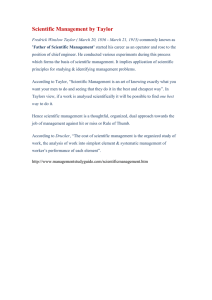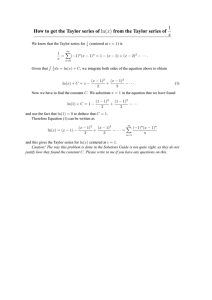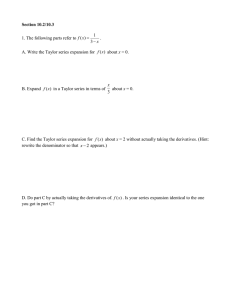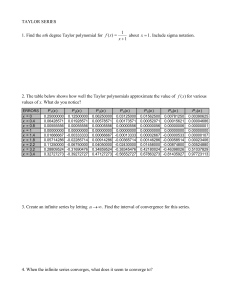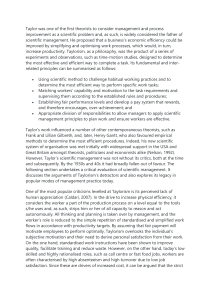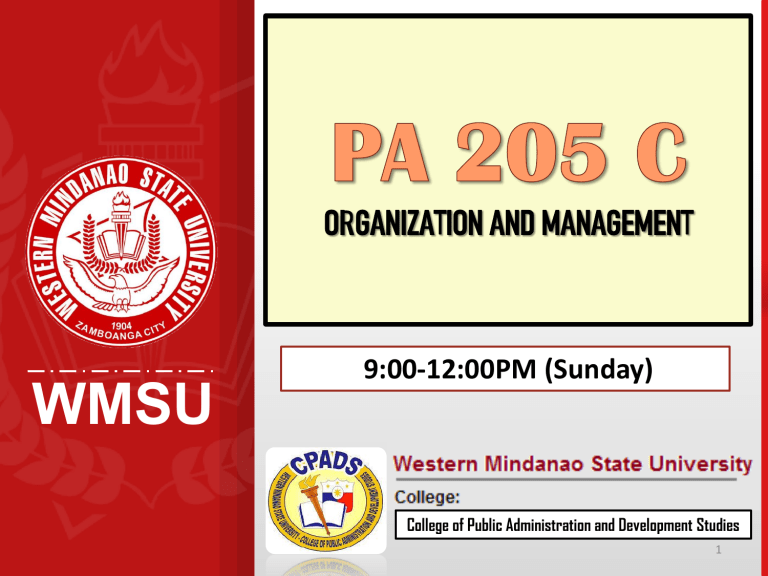
WMSU 9:00-12:00PM (Sunday) College of Public Administration and Development Studies 1 WMSU The principles of scientific management Prepared by: LAIZEL ANN S. 2 TAHIL SCOPE OF PRESENTATION I. Objectives II. Introduction III. Brief History of F.W. Taylor IV. Scientific Management V. Principles of Scientific Management VI. Techniques of Taylorism VII. Conclusion 3 OBJECTIVES At the end of the discussion, we will able to: a. Understand the Principles of Scientific Management; b. Identify the Principle of Scientific Management in an organization; and c. Application of Taylorism Theory in an organization. 4 - A process of planning, decision making, organizing, leading, motivating, and controlling the human resources, financial, physical, and information resources of an organization to reach its goals efficiently and effectively. 5 Management in Pre-Industrial Age - It is the art of getting things done through people 6 Industrial Revolution in the late 18th Century ▪ Industry = Work; Revolution = Rapid Change ▪ Farms to factories ▪ Machine power substituted human power ▪ Someone to forecast and handle the entire task (managers) ▪ Emerging issues during this time ? How are we going to organize all of this How are we going to maximize productivity How are we going to manage these people working together One of the Founding Fathers of Classical Management Theory Frederick Winslow Taylor (1856 – 1915) 7 Frederick Winslow Taylor (20 March 1856-21 March 1915) ❖ American mechanical engineer and management consultant ❖ Sought to improve industrial efficiency ❖ Wanted to make organization more standardized, efficient, and productive ❖ One of the Founding Fathers of Classical Management Theory ❖ Father of Scientific Management ❖ Published “Principles of Scientific Management‟ in 1911 8 Prior to Scientific Management ▪ Taylor observed the phenomenon of workers’ ▪ Soldiering: workers deliberately do as little as possible ▪ Universal belief among workers ▪ Non-incentive wage systems ▪ Rule-of-thumb management 9 “It is the art knowing exactly what do you want men to do and then seeing they do it in the best and cheapest way.” – F.W. Taylor ✓ Application of scientific principles for studying task carefully and systematically at the micro level to speed up work ✓ Seeks to improve an organization’s efficiency ✓ Wanted to find the “one right way” to do every single task ✓ Scientific Management is also known as Taylorism 10 Principles of Scientific Management S H C D 11 Principles of Scientific Management 1. SCIENCE, not Rule-of-thumb -Replace working by rule-ofthumb and instead use the scientific approach to study work and determine the most efficient way to perform specific tasks 12 Principles of Scientific Management 2. HARMONY, not Discord -This principle states that there should be harmony between the management & the workers. This requires change of mental attitudes of the workers & the management towards each other. 13 Principles of Scientific Management 3. COOPERATION, not Individualism -This principle emphasizes cooperation between workers and management. Mutual confidence and sense of goodwill should prevail among both managers as well as workers 14 Principles of Scientific Management 4. DEVELOPMENT OF EACH & EVERY PERSON TO HIS/HER GREATEST EFFICIENCY & PROSPERITY -This principle states that organizations must appoint such people who possess the mental, physical, and intellectual capabilities required for the job. It must also train employees if needed to improve their productivity and achieve growth. 15 Taylor developed number of techniques to facilitate scientific management 16 Techniques of Scientific Management 1. Functional Foremanship - division of factory into two departments (Planning and Production) 17 Techniques of Scientific Management 2. Standardization and simplification ✓ Standardization means maintaining standard size, weight, type, measure and quality of a product and standard amount of work ✓ Simplification means eliminating unnecessary diversity of product size and types 18 Techniques of Scientific Management 3. Scientific Study of Work ✓ Conduct the deep analysis of all the activities being performed in the organization with the aim of producing maximum possible quality output at minimum costs • • • • Method Study Motion Study Time Study Fatigue Study 19 Techniques of Scientific Management 4. Differential Wage System/ Differential Piece Rate ✓ Adoption of differential wage systems in order to motivate the employees. According to this system, wages are paid on the basis of work done and not on the basis of time spent in doing the work. 20 Techniques of Scientific Management 5. Mental Revolution ✓ According to Taylor, instead fighting over divisions of profits, both the managers and workers should make efforts for increasing profit. ✓ It is the change in mental attitude of workers and management towards each other. Must establish cooperation between worker and employers and develop positive thinking among each other 21 22 23 Conclusion ▪ From Personal Human Resource to Human Capital Resource. ▪ Scientific management has come up with methods of production that are most effective and cheap. ▪ Taylor has substantially contributed to today’s human resources management, his theories form a basis for personnel selection in an organization, being one of the most important functions of personnel management. ▪ Although he has been criticized for putting the human factor into the background. ▪ Taylor was effective in the development of long-term employment by suggesting recruiting the personnel utilizing principles of scientific management. 24 THANK YOU FOR LISTENING! ☺ 25
